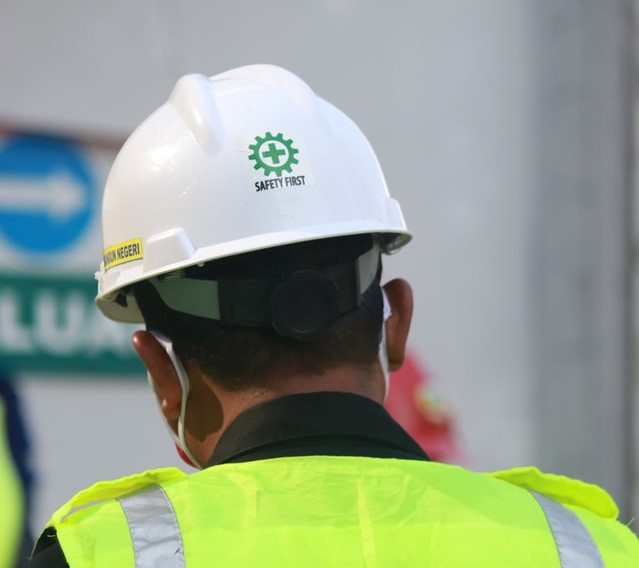
If you’re a regular reader of our blog you’ll probably have seen our recent post on the new Building Safety Bill. If you haven’t or you’re a new reader (welcome!) Here are 9 Key Things We Learned From the New Building Safety Bill (or you can dive head first into the full 218 page report here).
The new bill has been published four years after the Grenfell Tower Disaster following an independent review and then Dame Judith Hackitt’s report Building a Safe Future. Essentially the overarching message from each was that building safety and regulation in the UK was far below standard and needed urgent revamping to prevent further tragedy.
The bill focuses on shortcomings in the areas of accountability, complacent compliance testing, and inaccurate data and record keeping.
That brings us to today’s blog where we’ll be looking at how housing associations can use technology to rebuild trust around safety and compliance in buildings.
Accountable Person or Building Safety Manager?
When it comes to accountability in building safety and compliance, there’s often a lack of clarity involved. The new Building Safety Bill necessitates an Accountable Person, a person or entity legally responsible for assessing and managing safety risks and compliance in high-rise residential buildings under their control.
The Accountable Person(s) will be required to appoint a Building Safety Manager for every “higher risk” building in the country. This Building Safety Manager will be responsible for ensuring the building meets the requirements of the new regulator.
It’s a little vague, but it appears that the Building Safety Manager and Accountable person will share responsibility for day-to-day ongoing safety obligations. We expect that more clarity will come through practice once the bill is fully enacted.
If you want to learn more about responsibilities, check out the ‘Accountable Person’ heading in our previous post.
The Difficulty
The responsibility issue with the accountable person is twofold. If only one person were to be selected it could prove troubling to have a single person faced with a wall of compliance tasks and administration, not to mention the overwhelming amount of information and data involved with larger buildings. If the accountable person were to be an entity, rather than a single person, sharing of data and information needs to be far more open, transparent and easily accessible than it is currently to keep everyone on the same page.
The issue of fatigue and resultant mistake making here is an obvious one. Complacency and mistakes have led to tragedy before and the point of this bill is to not let that happen again. Realistically though, it’s not the most reasonable thing to expect of a single building safety manager, or a single accountable person, but that’s what the bill seems to be aiming for.
More human error comes into play when we look at record keeping and data. We’re only human, we all make mistakes (especially when filling out the 101st row of a spreadsheet). Further to that, all this data often exists in silos (an isolated and insular way of storing data) and scattered documents which can cause issues when trying to share information or conduct an audit. The actual value or insight we can gain from data that’s recorded this way immediately becomes quite limited.
Finally there’s the issue of outsourced or third party compliance testing and the niggling doubt over potential complacency. Simply put, there’s always a fear that things might not be done right by a third party.
It all sounds like a bit of hassle, right? And in building safety and compliance anything that impedes our safety is a negative that needs to be addressed.
One solution is end-to-end automation. Sit back as technology takes care of your ongoing compliance testing and keeps accurate digital records. It’s quicker, easier, more accurate and as a result safer.
This is particularly important when we take the new Building Safety Bill into account. This bill is going to demand a much higher level of assurance compared to what people in the industry are currently used to.
Automation – Digital Records – Data Analytics
The bill is 6 to 12 months away from being fully up and running but it’s imperative that behaviours, systems and processes change now to give housing associations the best chance to be able to meet these new requirements and standards.
For example, the new Building Safety Bill requires the Accountable Person to be able to describe the measures they have in place to protect the inhabitants of their building and minimise impact if something goes wrong (systems such as emergency lighting and fire alarms). On top of that they need to be able to show the Building Safety Regulator how they ensure these systems will work when called upon.
The most airtight and reliable way for the Accountable Person to do this is through end-to-end automation. If housing associations get in on the technology now they can be in a very secure position to keep pace with the new bill’s requirements.
But that’s not the only way technology will help rebuild trust around safety and compliance in buildings. For example, digital records make finding information easy in the instance that an audit is necessary and data analytics can help identify worrying trends and intervene before it’s too late. Then the person whose job it was to pour over endless spreadsheet information can put their feet up, as this is all under control.
These data analytics can even go as far as to see how often a system such as a smoke alarm is being triggered. This could help identify occupants who have regular false alarms, perhaps due to living with dementia, which in turn helps create a holistic building community approach to the safety of the inhabitants.
Takeaway
Essentially, the Accountable persons and Building safety managers within housing associations need to place their trust in IoT and software. The accuracy and repeatability of hardware and software is miles ahead of manual compliance testing which allows for human error, laziness and complacency. It’s also quicker and more cost-effective.
To tie it all together, a single API that channels all this automated information into one place is essential. Why automate everything only to leave it in separate softwares and dashboards which then need to be manually correlated?
So that’s how housing associations can use technology to rebuild trust around safety and compliance in buildings. It’s quicker and easier as well as creating an all encompassing approach to keeping people safe and keeping airtight records for review if something were to go wrong.
The key terms here are trust and confidence. Housing associations need to place their trust in technology now so they can be confident of meeting the standards and requirements of the new Building Safety Bill. In turn they can be confident of the safety of their tenants. The bill is still 6-12 months away from being fully enacted, but if housing associations act early and adapt right now, they’ll be ahead of the curve when these new regulations come into play.

